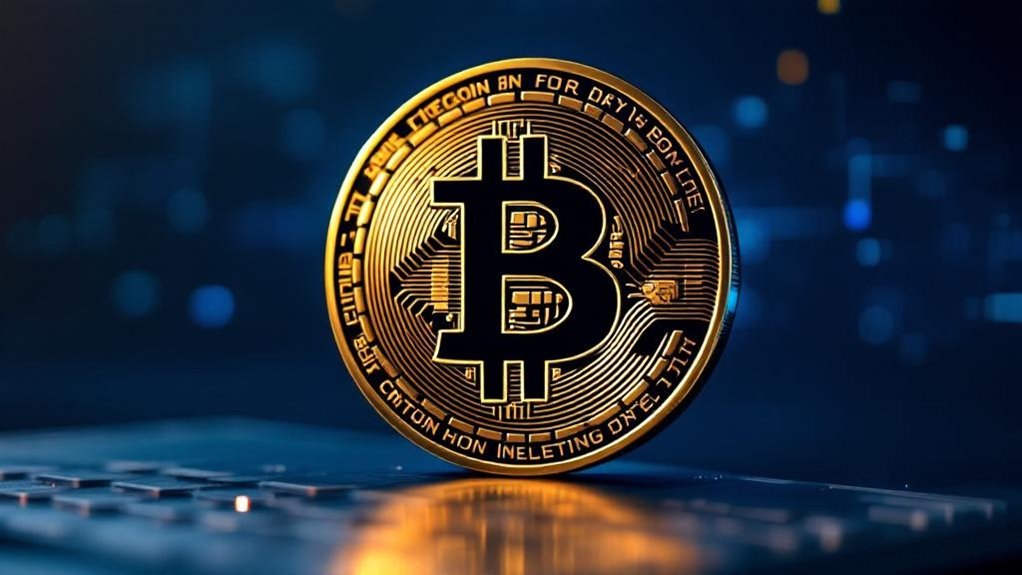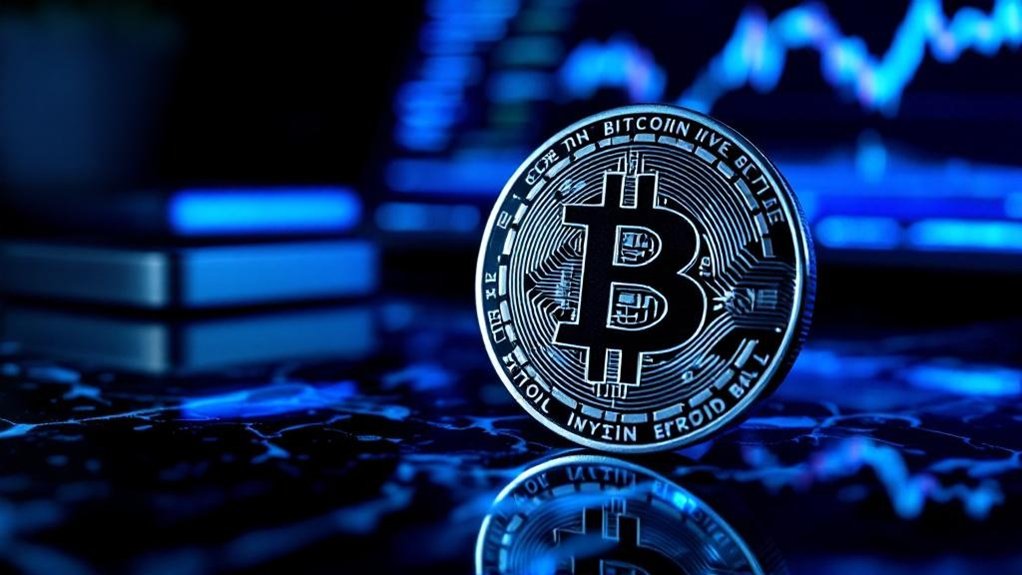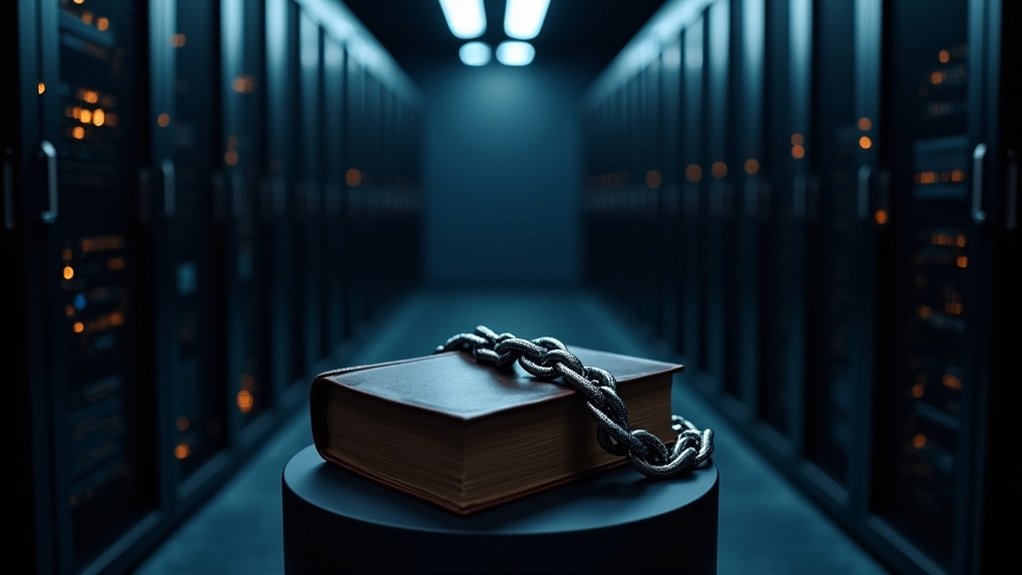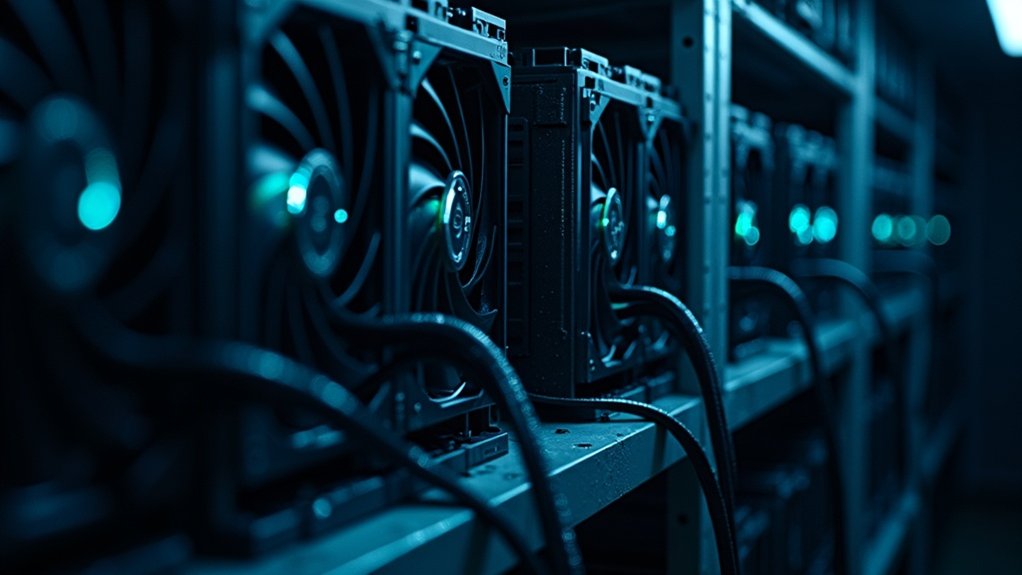Getting into Bitcoin isn’t rocket science. First, pick a cryptocurrency exchange like Binance or Coinbase – they’re basically digital currency supermarkets. Next, verify your identity with documents (yeah, it’s regulated now). Then choose between a “hot” wallet connected to the internet or a “cold” offline wallet for storage. You can buy fractions of Bitcoin, no need for whole coins. The crypto world’s wild price swings and security measures might seem intimidating, but there’s more to this digital gold rush than meets the eye.

Wondering how to jump into the Bitcoin craze?
Buying Bitcoin isn’t rocket science, but it does require some careful steps.
First, you’ll need a cryptocurrency exchange – think of it as your digital currency supermarket.
Popular platforms like Binance, Coinbase, and Kraken make it pretty straightforward for newcomers.
Just be ready to verify your identity.
Yes, they’ll need your documents.
Welcome to regulated finance.
Recent data shows Bitcoin above $115,000, reflecting the market’s incredible growth potential.
Once you’ve picked an exchange, you’ll need a wallet to store your Bitcoin.
Understanding private and public keys is essential for securing your cryptocurrency assets.
It’s not like a leather wallet – it’s more like a super-secure digital vault with a really long address.
You’ve got two options: hot wallets (connected to the internet) or cold wallets (offline storage).
Hot wallets are convenient but more vulnerable to hackers.
Cold wallets are like Fort Knox – safer but less convenient.
Choose wisely.
Now comes the fun part: actually buying Bitcoin.
You don’t need to buy a whole Bitcoin – that’s a relief, given the price tag.
You can buy tiny fractions, whatever fits your budget.
Payment options include bank transfers, credit cards, or even those Bitcoin ATMs popping up everywhere (though they’ll charge you an arm and a leg – seriously, up to 15% in fees).
Speaking of fees, they’re everywhere in the crypto world.
Exchanges typically charge 1% to 4%, but credit card purchases might cost you more.
Some folks prefer Bitcoin ETFs or other financial instruments for indirect exposure.
It’s like buying Bitcoin without actually buying Bitcoin.
Clever, right?
The purchase itself is pretty transparent – everything gets recorded on the blockchain, which is basically a public ledger that everyone can see.
Once the transaction is complete, your Bitcoin shows up in your wallet.
Just like magic, except it’s all math and cryptography.
Remember though, the crypto market is about as stable as a caffeinated squirrel – prices can swing wildly in any direction.
The best approach for beginners is to start with HODLing your Bitcoin, which means buying and holding long-term rather than actively trading.
Frequently Asked Questions
Why Does Bitcoin’s Price Fluctuate so Much?
Bitcoin’s price swings wildly because of its unique supply-demand dynamics and intense market reactions.
Limited supply (just 21 million coins ever) meets unpredictable demand – when everyone wants in, prices soar. When they panic, it tanks.
Throw in government regulations, media hype, and speculative trading, and you’ve got a recipe for rollercoaster prices.
Recent institutional adoption has actually calmed things down a bit, surprisingly enough.
What Happens to My Bitcoin if I Lose My Wallet Password?
If you lose just your wallet password but have the 12-word seed phrase backup, you can recover everything. No sweat.
But lose that seed phrase? Game over.
Seriously – those coins are gone forever. Like, billions in Bitcoin are permanently lost this way.
No help desk. No password reset. No customer service to call.
That’s the beauty (and brutality) of decentralized crypto – you’re your own bank, for better or worse.
Can Governments Ban or Regulate Bitcoin?
Yes, governments can ban or restrict Bitcoin activities within their borders.
Several countries already have.
But here’s the thing – actually enforcing those bans? That’s tricky.
Bitcoin’s decentralized nature means it can’t be completely shut down.
While governments can regulate exchanges, mining operations, and service providers, they can’t control the underlying peer-to-peer network.
Think of it like trying to ban the internet – you can restrict access, but you can’t eliminate it entirely.
How Are Bitcoin Transactions Taxed in Different Countries?
Bitcoin tax rules are all over the place.
Some countries don’t touch crypto gains at all – places like El Salvador, UAE, and Singapore give crypto traders a free pass. Must be nice.
Others? Not so friendly. Japan and Denmark slam traders with up to 55% tax rates. Ouch.
Germany’s got this weird “hodl for a year” rule – keep your Bitcoin that long and skip the taxes.
Most places either treat crypto as property or income. It’s a real mixed bag.
What Makes Bitcoin Different From Traditional Government-Issued Currencies?
Bitcoin stands apart from government currencies in several key ways.
It’s completely decentralized – no government or bank controls it. Period.
The supply is capped at 21 million coins, unlike fiat money that central banks can print endlessly.
Transactions happen peer-to-peer, cutting out those pesky middlemen and their fees.
Plus, it runs 24/7 on blockchain technology, making transactions transparent and immutable. No banker’s hours here, folks.









